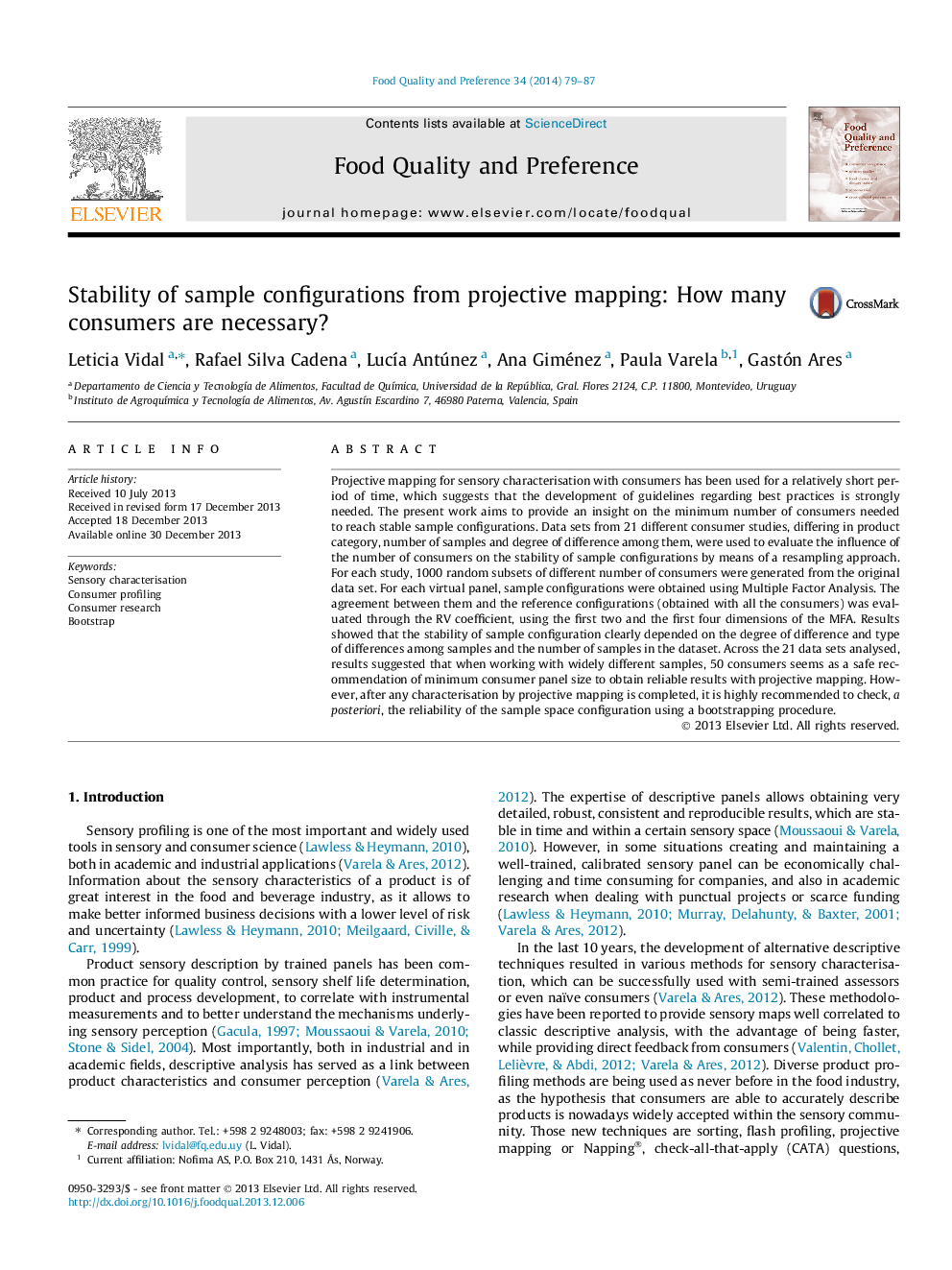| Article ID | Journal | Published Year | Pages | File Type |
|---|---|---|---|---|
| 4317193 | Food Quality and Preference | 2014 | 9 Pages |
•Stability of product spaces from projective mapping as a function of the number of consumers was studied.•The minimum number of consumers necessary to yield stable maps varied among the studies.•50 consumers seems reasonable when working with widely different samples.•Average RV coefficient of virtual panels can estimate reliability of sample spaces.
Projective mapping for sensory characterisation with consumers has been used for a relatively short period of time, which suggests that the development of guidelines regarding best practices is strongly needed. The present work aims to provide an insight on the minimum number of consumers needed to reach stable sample configurations. Data sets from 21 different consumer studies, differing in product category, number of samples and degree of difference among them, were used to evaluate the influence of the number of consumers on the stability of sample configurations by means of a resampling approach. For each study, 1000 random subsets of different number of consumers were generated from the original data set. For each virtual panel, sample configurations were obtained using Multiple Factor Analysis. The agreement between them and the reference configurations (obtained with all the consumers) was evaluated through the RV coefficient, using the first two and the first four dimensions of the MFA. Results showed that the stability of sample configuration clearly depended on the degree of difference and type of differences among samples and the number of samples in the dataset. Across the 21 data sets analysed, results suggested that when working with widely different samples, 50 consumers seems as a safe recommendation of minimum consumer panel size to obtain reliable results with projective mapping. However, after any characterisation by projective mapping is completed, it is highly recommended to check, a posteriori, the reliability of the sample space configuration using a bootstrapping procedure.
